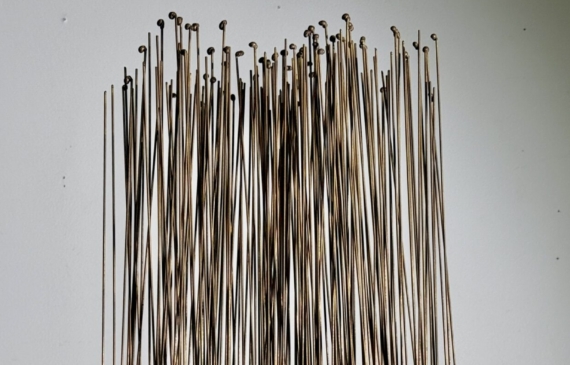
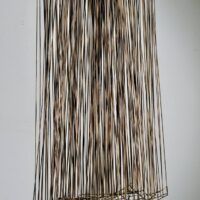
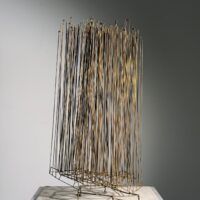




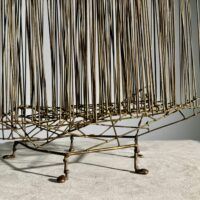

Harry Bertoia (American, 1915-1978)
Screen, circa early 1960s
Welded wire, 21 ¾ H. x 11 ½ W. x 7 ⅝ D. inches
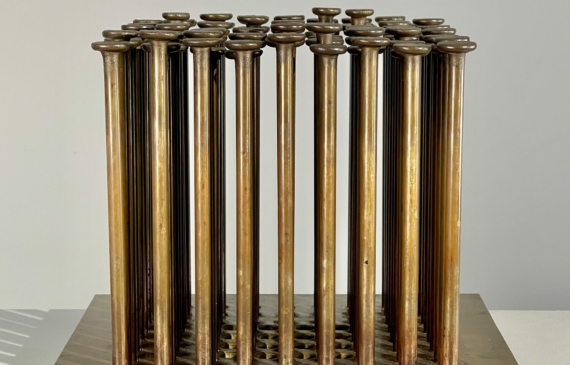
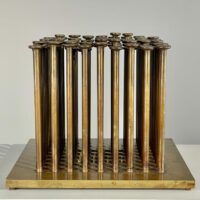
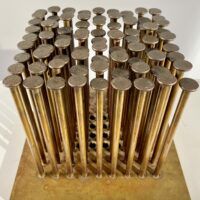
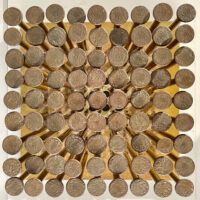


Harry Bertoia (American, 1915–1978)
Mushroom Tonal, 1978
Brass, bronze, natural patina
10 H. x 11 ¾ square inches
Provenance:
Acquired directly from the artist
Private collection, New York
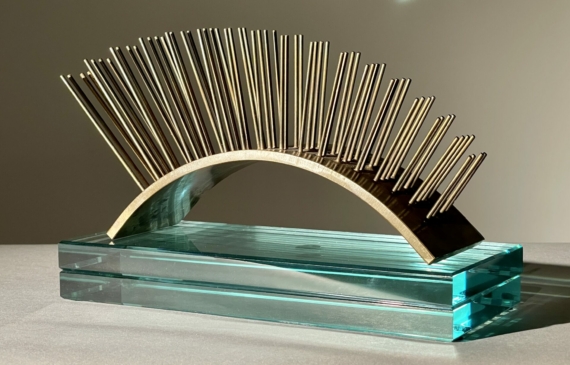

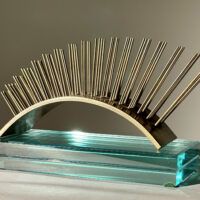


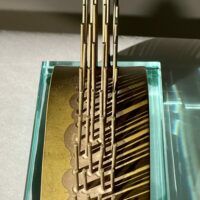
Harry Bertoia (American, 1915–1978)
Harp Form, c. 1970
Beryllium-copper rods silvered to brass base, curved to stand on edges
5 ¼ H. x 10 ¾ W. x 3 D. inches
Provenance:
The artist
Private collection, New York, acquired from above, circa 1970
Harry Bertoia grew up in Italy between Venice and the Austrian border, and his artistic talents were present even during childhood. He preferred drawing to household chores and was often asked to design linen embroidery patterns for local brides. At the young age of 15, he moved to the United States to join his brother, who had already been established in the country. He continued his education in various schools, but a pivotal opportunity presented itself to the artist when he was invited to study on scholarship at Cranbrook Academy of Art in Michigan. The school was unique in that it did not award degrees, but rather enabled creatives to experiment and decipher their own paths. He progressed to teach painting and metalworking at the school. Metal was in high demand for ammunition and weapons to support the war effort, so Bertoia took to jewelry making, which used far less material than sculpture. He also experimented with printmaking during this time, and created a series of monoprints that were sold in a group of 100 to New York’s Guggenheim Museum.
In 1943, Bertoia relocated to California to work with Charles and Ray Eames, shifting his focus to furniture design. It is widely believed that he designed elements of the Eames furniture line but received no credit, which is likely what prompted the artist to accept a new opportunity working for Knoll Associates in New York in 1950. Here, among other creations, he produced the Diamond chair, commonly referred to as the “Bertoia Chair.” His furniture designs, still well-known today, became so popular that he was able to devote himself to sculpture while living off the furniture sales.
Bertoia was commissioned in 1955 to create an altarpiece for the chapel at MIT in Cambridge, which led to other notable site-specific commissions for venues like the Philadelphia Civic Center, the Federal Reserve Bank building, Richmond, and State Department building, Washington, D.C. It was not until the 1960s that he really shifted his attention towards his iconic sound sculptures, or tonal sculptures. Beryllium copper was a favorite material used in the production of these works, and the shape of the sound sculptures often resemble nature. The artist completed over 50 public works and thousands of smaller sculptures during his abbreviated lifetime. Bertoia’s work can be found in important institutions across the country and internationally, including The Art Institute of Chicago; Denver Art Museum; Milwaukee Art Museum; Smithsonian Institution, Washington D.C.; Museum of Modern Art, New York; Musée des Arts Décoratifs, Paris; Nasher Sculpture Center, Dallas; and the Whitney Museum of American Art, New York.